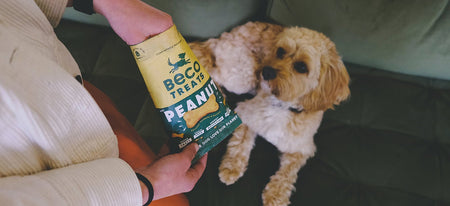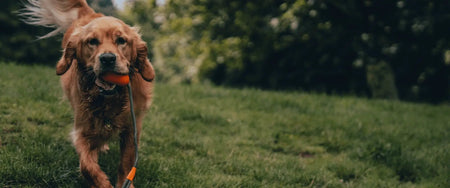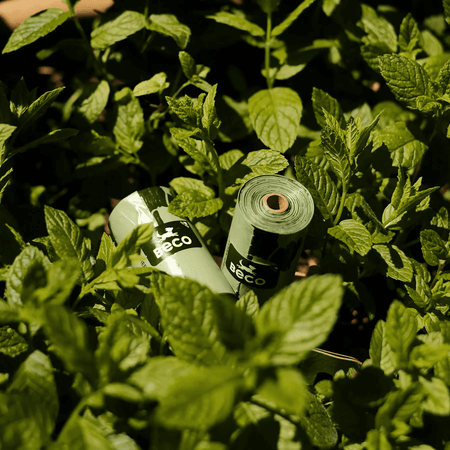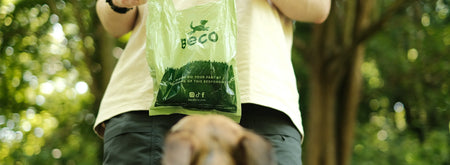Everyone loves a treat now and again, especially our little furry friends! There are so many treats out there it can be difficult to know when and where we should give them. We hope that this guide can address some common questions that you may have on how to show your dog love in a way that benefits them mentally and physically.
Before we get into some common questions let us take it back to basics. According to the Oxford dictionary a treat is defined as ‘an event or item that is out of the ordinary and gives great pleasure.’ The words “out of the ordinary” are in italics because it is very easy to over treat our lovely furry friends. We know that for many, dog, and cat alike, there is nothing more that they enjoy than food, especially treats! This makes it all too easy for us humans to show our love through food. Unfortunately, their greatest love is also their greatest adversary, if not provided correctly.
According to the Pet Food Manufacturers’ Association’s obesity report, 51% of dogs and 44% of cats are obese. Obesity in our pets is no joke. It is a serious health and welfare concern for our furry friends. Not only does it put them at more risk during surgical procedures, but it also increases the risks of them developing serious life-threatening diseases and those less threatening but definitely serious ones such as arthritis.
Obesity is not just bad for our pets; it is also bad for our planet. Overfeeding your pet uses more resources and so increases the carbon impact of your pet on the planet. Hence, the easiest way to cut down your pets’ carbon pawprint is to cut down the amount that you feed your pet, helping protect your furry friend’s health and the health of our beautiful planet.
Enough of this serious talk, let’s get on with answering your top treat related questions.
How often should I give my dogs treats?
Treats are great! And they taste even better when given responsibly in moderation. Treats should make up no more than 10% of your pups daily calorie intake. They can be richer than mealtime food and so high quantities can cause some upset sensitive stomachs.
As to when you should give treats it is entirely dependent on what you are using them for. If you are training, on a walk for example, to keep your dog’s attention, it may be best to use before their mealtime.
Treats used as training treats, the different types of treats available
If you are using treats to train, the easiest way to make sure you are feeding the right amount is to take some of the biscuits from their weighed food portions of breakfast or dinner to use. If you like a variety of treats just make sure that you adjust the regular meal portion size to balance out the extra calories they’re consuming. Whenever training with treats, keep the treat as small as possible.
A variety of treats during training can keep your dog focused throughout. Every dog has a favourite treat and so by adopting a hierarchy of foods you can really encourage focus on new behaviours that you are training and keep your friend interested in you. The healthiest way to do this, in terms of not overfeeding, is to use some of the mealtime biscuits (as discussed above), for commands you have locked in, and special treats (like Beco’s new treat range!) for commands you are learning.
The different types of treats to use include:
- Normal food biscuits
- Vegetables; carrot, broccoli, pumpkin
- Peanut butter*
- Beco’s new treat range
- Fruit; strawberries, apple, blueberries
- Insect based treats
- Small pieces of bland meats**
*May not be appropriate for hyperactive pups or those with dental issues
**Richer meats when used in high quantities can cause upset tummies
Dogs are omnivores and so treats don’t have to be animal based to bring them great joy. If you are looking to cut down the meat consumption of your pet, then switching to treats not containing animal products is an easy swap! Plant based treats are usually less calorific too, and so good for keeping your dog lean and healthy.
It is also worth noting that for dogs that are very driven by toys, play time or a moment with their toy can be just as rewarding as food.
How do I know if I am giving my dog too many treats?
If you over treat your dog you may start to see some weight gain and in those with sensitive stomachs, some loose stools. If you are giving treats that are high in sugar you may also see the start of some dental disease.
Just like humans, our canine friends have a certain number of calories that are perfect for them per day, this is called their resting energy requirements. There are many ways to calculate this, and your vet or vet nurse will best be able to advise you on this. There are also some useful websites that can help such as, the PFMA.
How to reward with treats for good behaviour vs bad behaviour?
Generally, bad behaviour should be largely ignored. For example, if a naughty pup picks up a sock or something else that they shouldn’t have, a good tip is to walk in the other direction or start to play with another toy enthusiastically. Rewarding the good behaviour such as, coming when called or dropping the sock when asked, is the perfect opportunity to reinforce the good behaviour with a treat. Positive reinforcement, so providing a treat for good behaviour, is far more effective when training your dog than negative reinforcement, telling them off.
The sooner you treat your pup after they perform the desired act the clearer it is for them that you are rewarding them for that behaviour. However, verbal rewards, such as ‘good dog’ and a big fuss can also be just as rewarding as a treat in some cases.
What ingredients should I look for in a treat?
The ideal treat would be one that not only is delicious but also provides healthy nutrition to your pet. That is why it is best to look for treats that contain natural ingredients that are beneficial to your pet and ideally low in calories.
written by Madi Hewitson
Coming from a BVMedSci (Hons) background, she’s a small animal vet who loves dogs and cats and has a goal to see them all live long and healthy lives, as so they all should. You won’t find her without her with her four-legged best friend, a rescue dog called Ro.
“I am very passionate about the interconnection between animal and environmental health. To further my knowledge, I am doing a Masters in Veterinary Epidemiology which I hope to take further and create a lasting impact to protect our pets health from environmental change far into the future.”











